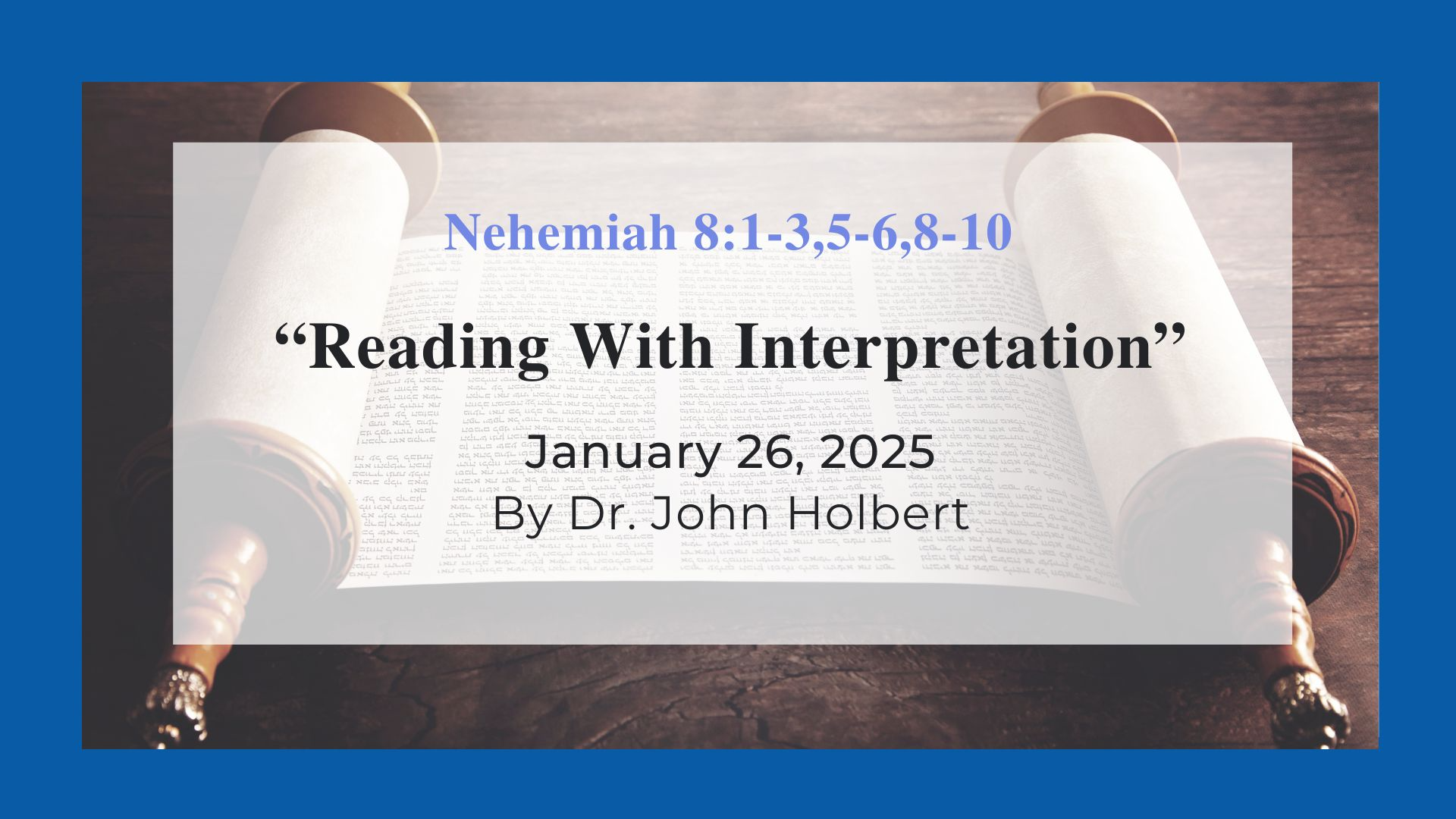Reading With Interpretation - Reflections onNehemiah 8:1-3,5-6,8,10, Epiphany 3, Year C
by John C. Holbert on Friday, December 27, 2024

The two books of the Hebrew Bible, Ezra and Nehemiah, have generated much scholarly debate, perhaps in part due to their shady historical backgrounds. Indeed, over the two centuries of critical Bible study, there have been any number of studies that have argued vociferously the question of which of them came first to a Persian Jerusalem, what their actual titles were, and the precise meaning of those titles, and ultimately just what sort of persons each was, if one can in any way glean such information. Many a doctoral dissertation has been spawned by these books! The basic reason for that fact, beyond the ones I just enumerated, is that they present to us the only serious information we have about the so-called “Israelite Dark Age,” namely that time in their history when the Persians controlled the area. That time is roughly 539-400BCE (The Greeks of Salamis off the western coast of Greece in 480 BCE, won the battle won the battle of Salamis off the western coast of Greece in 480BCE, but Persian infuence on Israel persisted sometime beyond that date.) However historical, or non-historical, the books may be, they do offer at least a glimpse of what life may have been like in Jerusalem in the 5th century.
Most scholars agree that Nehemiah was a kind of building contractor, helping the shattered walls of the Holy City to be reconstructed, at least a century after the Babylonian assault. If that is true, then the city was in a relative state of ruin for a very long time, despite the supposedly rebuilt temple of 515, made light of in Haggai 2. Nehemiah was sent to the city as a Persian representative to aid the city in its attempts at rebuilding. Those attempts were impeded by struggles between three different groups, all of whom may have called themselves Jews. There were the descendants of those who had remained in the city after the Babylonian holocaust; they would naturally have prided themselves on their lengthy history in the city. Then there were those who had returned from Babylonian exile in 539 and later. They were heirs of the king and priests and leaders who were carted off to Babylon, early in the 6th century, and saw themselves as the true heirs of the former greatness of the city. The third group were those who had lived in the north of Israel when Jerusalem had been sacked. They were descendants of the mixed race of Assyrians, who had destroyed the capital of the north in 722BCE, and Israrlites who had lived there for 200 years after the division of Israel in 922. They now came to live in the restored Jerusalem, claiming a long antiquity in the land. Each saw themselves as the real Israelites. Nehemiah’s work of rebuilding must have been a nightmare, given that Jewish mess!
In Nehemiah 8, we are offered a delightful and powerful scene of the work primarily of Ezra, apparently, who as some sort of priest has access to something like the Torah of YHWH. Nehemiah is named “governor” (Neh.8:9), while Ezra is called “priest and scribe,” while “Levites,” the traditional tribe of priests, are placed in the role of teachers. The scene is a grand one. Ezra assembles “all the people” (Neh.8:1), including women and children, and, one can surmise, the entire mass of squabbling groups in the city just enumerated above. “The priest Ezra brought the Torah before the assembly, both men and women, and all who could hear with understanding” (Neh. 8:2). They are gathered “in front of the Watergate” (no Nixon jokes, please!), a location unknown to modern archaeologists. They may be gathered there, because not all, especially the women and children, were not welcome in the temple.
Ezra proceeds to read to them from Torah “from early morning until noon,” reciting to the crowd, that is to those “who could understand” (Neh.8:3). This is the second time “understanding” has been mentioned. That raises the question: what does it mean in this context to “understand?” Is he reading the Torah in Hebrew, a language perhaps now lost to the majority of hearers, who have been speaking a polyglot of tongues, mixtures of Persian, Aramaic, and various local dialects of both? Or does it mean that the content of Ezra’s reading itself is difficult to grasp for a people who have long been separated from traditional biblical texts, assuming that what he is reading is some part of what we call Torah? Exactly what the priest reads we simply cannot know.
However, we can know that a large group of “experts” in Torah, listed in Neh.8:7, concluded by Levites “helped the people to understand the Torah, while the people remained in their places. They read from the book (i.e. Ezra and the long list of experts), from the Torah of God, with interpretation. They gave the sense, so that the people understood the reading” (Neh.8:8). Thus, Neh.8 does precisely what we do even now in the 21st century CE; we read from Torah and then give the sense, the interpretation. It may serve as some comfort, not to say surprise, that for at least 2500 years, the actions of reading and sermon interpretation have been practiced in Judaism, and then in Christianity. When you stand in your pulpit the next Sunday, imagine that Ezra and his interpreters stand with you, as you perform the hallowed task of daring to speak for God to your assembled, sometimes squabbling, congregation. God still calls us so to do.
